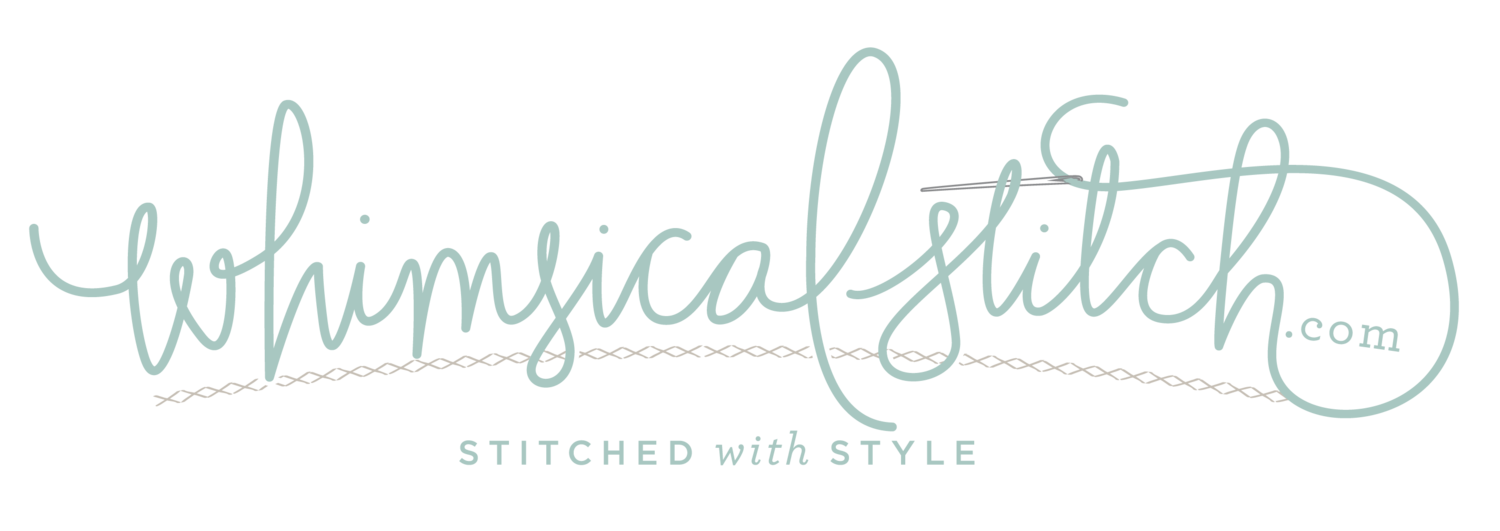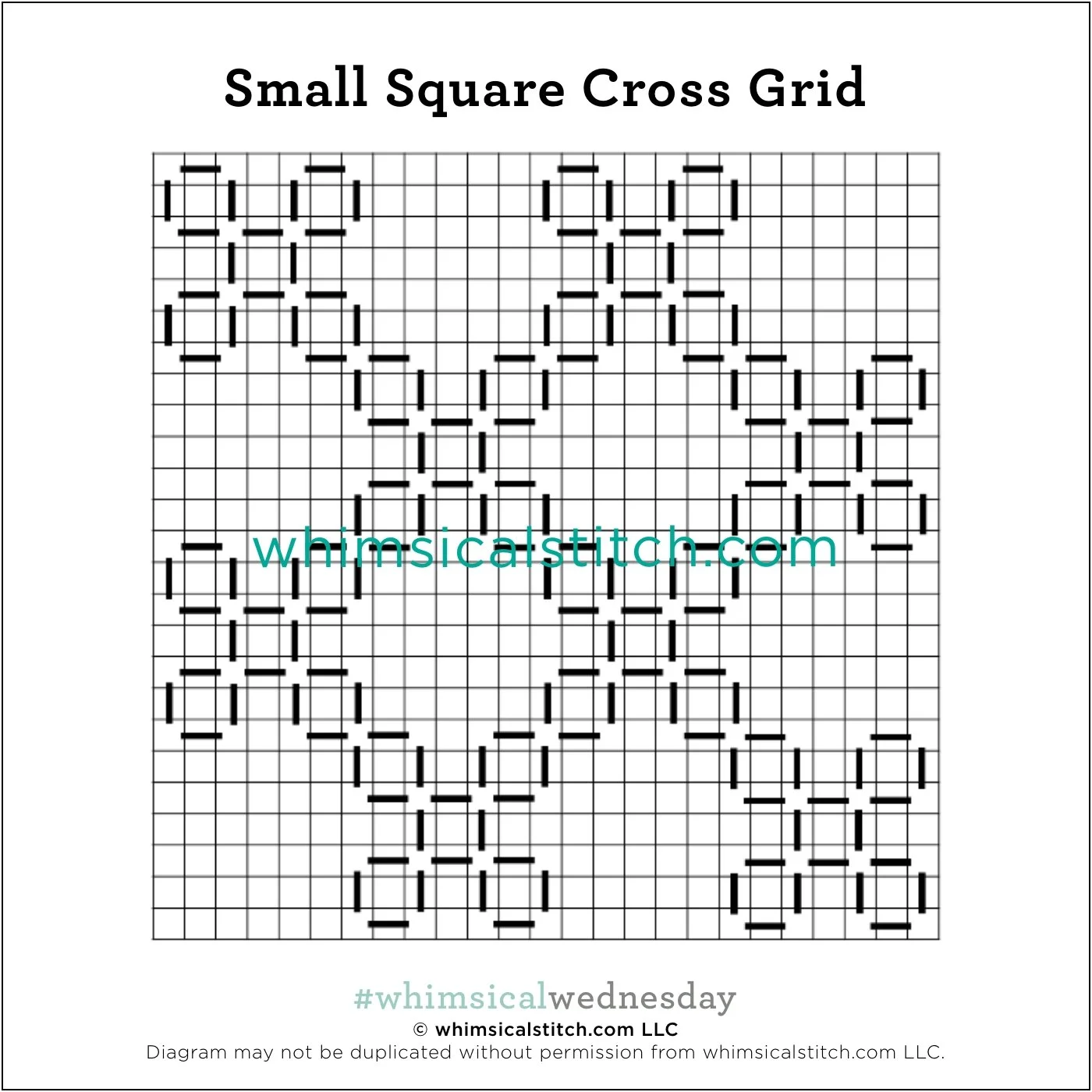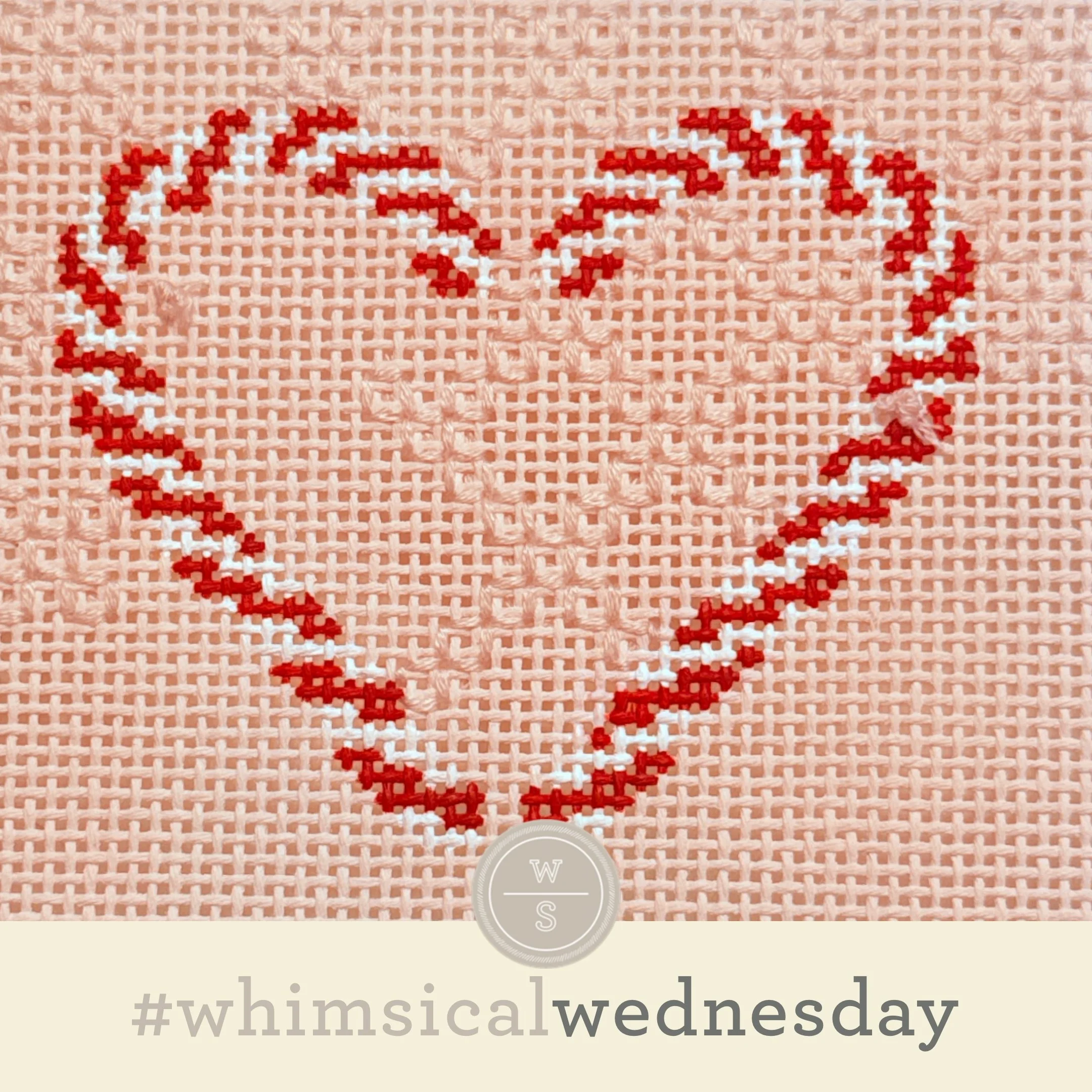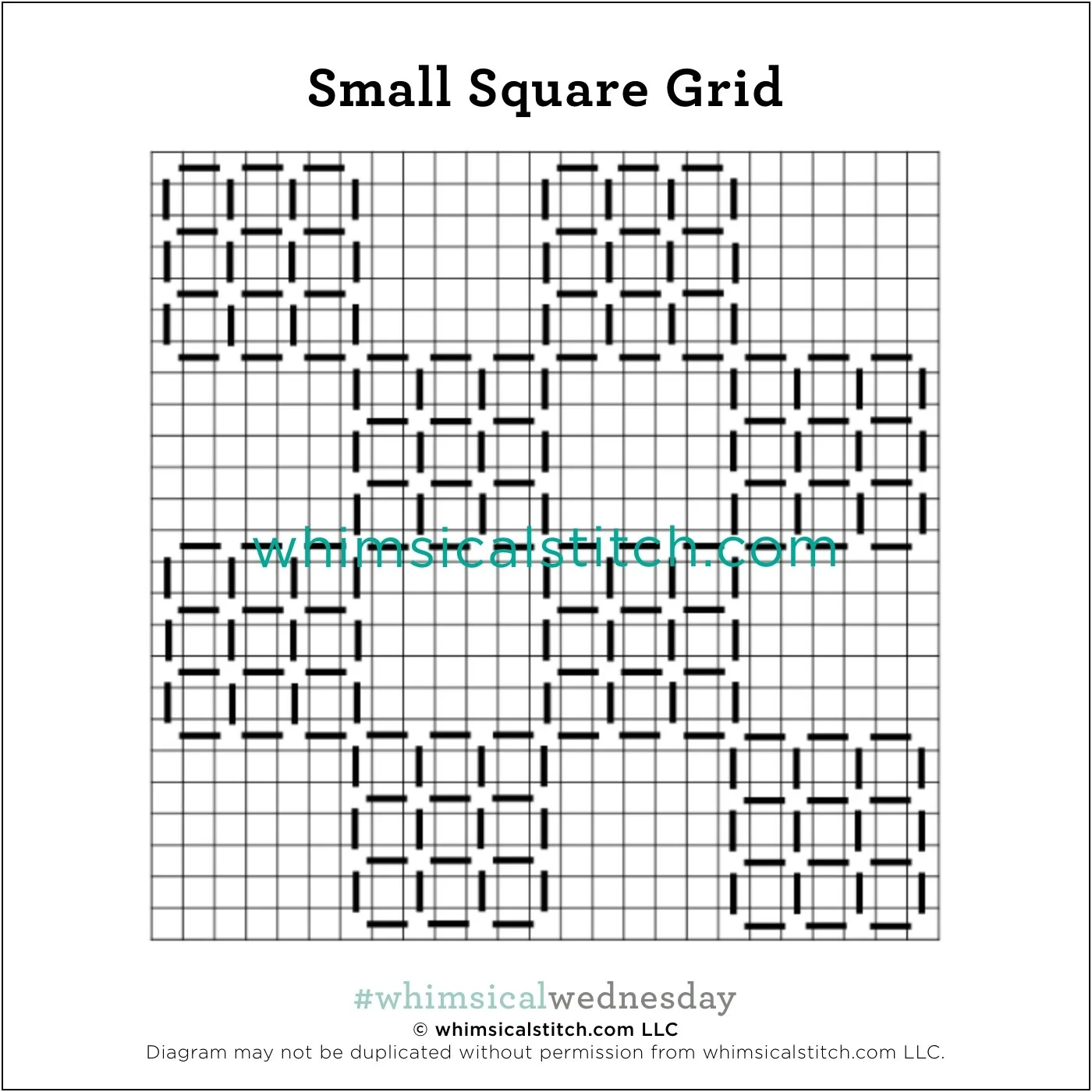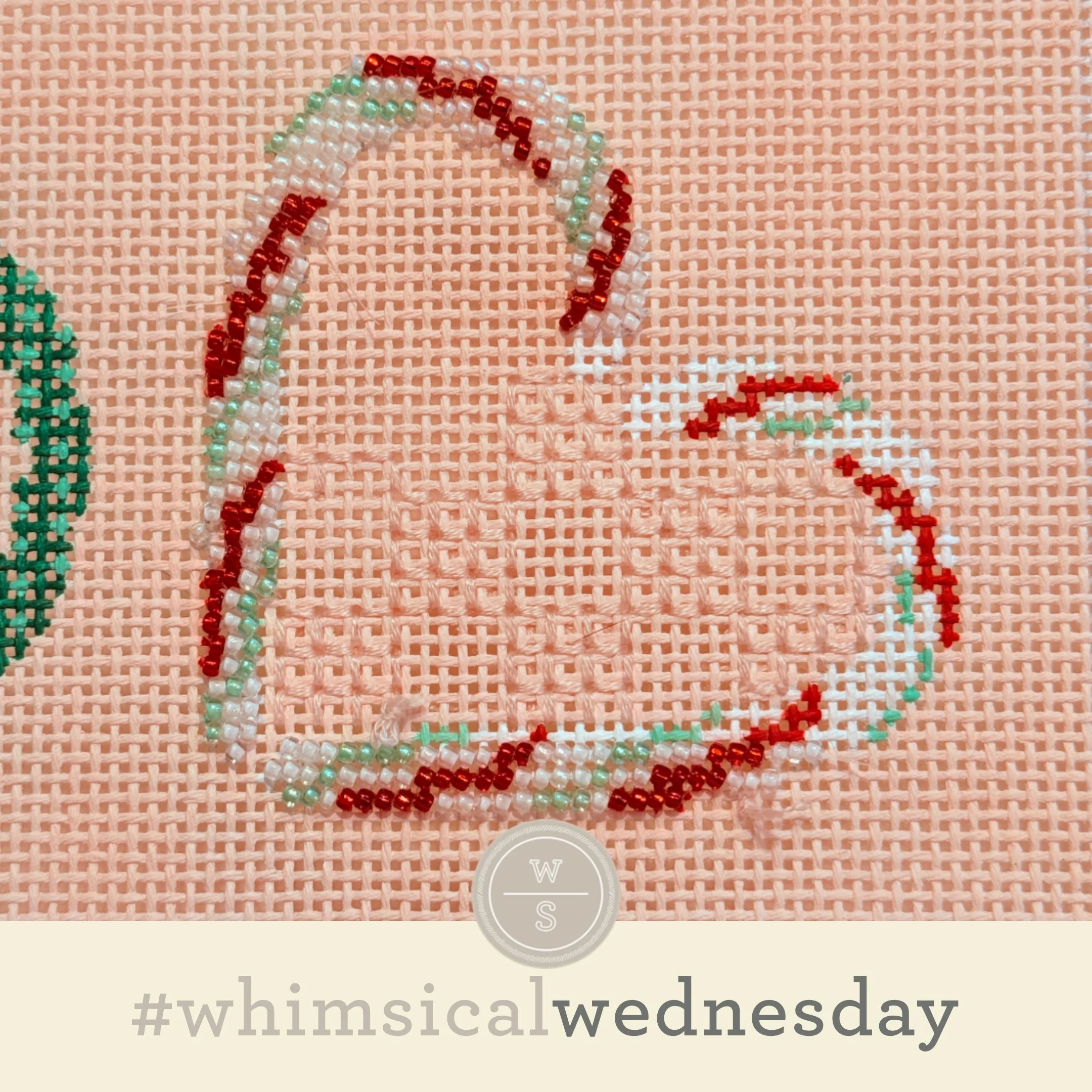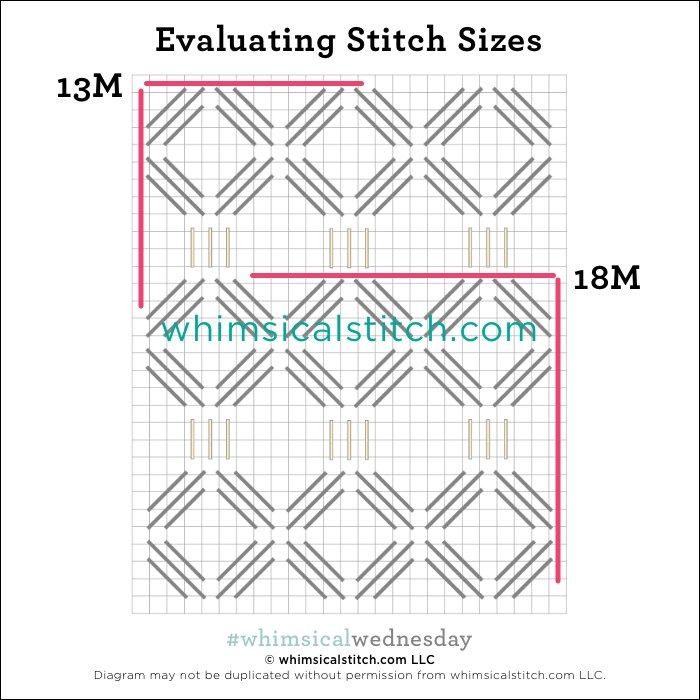So much for thinking I knew what I was doing. I started stitching a background with a variation of a recent favorite stitch of mine and was surprised at what emerged. So I changed it, but am offering both versions to you today.
Below is the first pass at the background. I used this stitch as inspiration, thinking all these cute squares would emerge. Well, if you look at the stitched sample, you can see the tiny squares, but the overall shape that emerged was diamonds. Sure, it is pretty, but I really wanted squares. The stitched sample uses four plies of Needlepoint Inc. Silk on 13M.
Did I mention I was playing a game of thread chicken? That didn’t help. I wanted squares, dammit. So I added four lines to each larger square and got squares! Yay me! This is exactly what I wanted. I also used three plies of the same Needlepoint Inc. Silk to gain an advantage in my thread chicken death match.
I may have lost my game of thread chicken, but I have found my new fave background stitch (until I find my next favorite background stitch). I want to play with the open squares to see where else I will love this stitch.
Stay tuned!
As you are auditioning stitches (from any stitch source), count the number of canvas threads on the diagram that match your mesh size. And there you have what an inch of the stitch will look like. Evaluate that against the area where you plan to use the stitch and make your final decision. If you start integrating this step into your stitch selection process, you may be surprised at how many stitches you think are large are much smaller than you realize.
By (sometimes) including this step in my own process, I find I am now integrating much longer stitches than I ever thought I would. I used to think a stitch six rows long was super big. I have very much changed my tune, which has helped me expand my creativity, especially for large-space stitches.
Today’s stitch diagram, along with all other #whimsicalwednesday and #smallspacesunday stitch diagrams, can also be found on a Pinterest board here. Be sure to follow whimsicalstitch.com on Facebook, Pinterest, Instagram, and Twitter.
If you like what you see on this blog, there's more. Mary’s Whimsical Stitches is a series of four books offering contemporary how-to collections of more than 200 stitches (in each volume) for all stitchers, regardless of skill level. All books include updated and sequenced diagrams from this blog, plus a collection of all-new stitches from private lessons and other class projects. Visit here to find a needlepoint retailer that carries my books.
New to needlepoint or looking for a refresher? Please download a handy how-to guide covering basic needlepoint stitches and stitch compensation techniques along with new top-line information on needlepoint materials and tools, how to handle threads, and other helpful needlepoint resources.
whimsicalstitch.com also sells Stitch Guides and Stitch Concepts for Melissa Shirley Designs, Zecca Designs, Sandra Gilmore, Purple Palm, Maggie, and Penny MacLeod, and many more. Click here to see the newest guides and click here to see the entire collection.
I hope you have the perfect spot for this stitch! Please enjoy! Have a wonderful #whimsicalwednesday!
A Note about Diagrams
I use color in diagrams to make them as clear as possible. The primary function of different colored lines is to illustrate a stitch sequence. For example, the layering of colors demonstrates you add them in that order. They can also provide ideas on integrating additional threads (one line for each color). Or, you can use the same thread for all color lines. That's where I encourage you to use your imagination for the space you are stitching!
